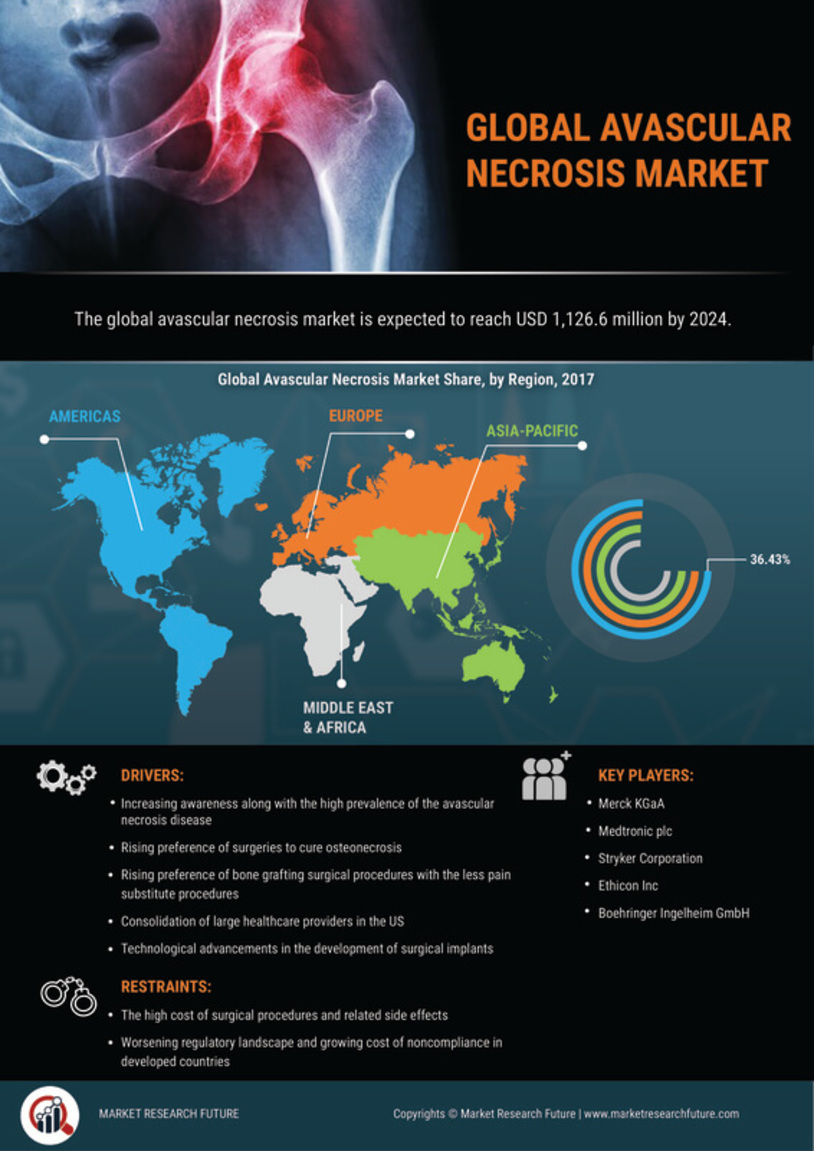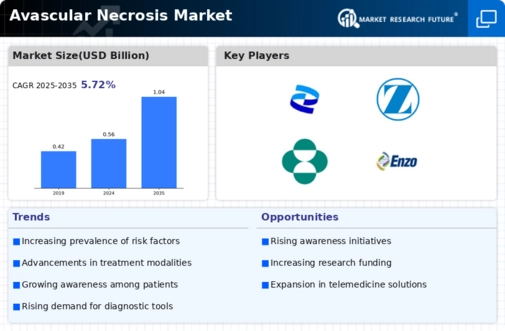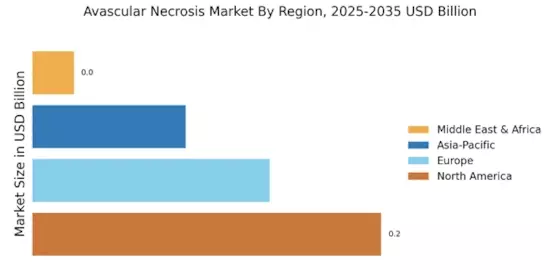Increasing Geriatric Population
The increasing geriatric population is a crucial driver for the Avascular Necrosis Market. As individuals age, the risk of developing AVN escalates due to factors such as decreased bone density and the prevalence of comorbidities. The World Health Organization projects that the number of people aged 60 years and older will double by 2050, which may lead to a corresponding rise in AVN cases. This demographic shift necessitates the development of age-appropriate treatment strategies and rehabilitation programs. Healthcare providers are likely to focus on managing AVN in older adults, thereby driving demand for specialized therapies. Consequently, the Avascular Necrosis Market is expected to expand as it adapts to the needs of an aging population.
Advancements in Diagnostic Techniques
Advancements in diagnostic techniques are significantly influencing the Avascular Necrosis Market. Enhanced imaging modalities, such as MRI and CT scans, allow for earlier and more accurate detection of AVN, which is crucial for effective treatment. The ability to identify AVN in its initial stages can lead to better patient outcomes and reduced healthcare costs. As diagnostic technologies continue to evolve, they are expected to facilitate timely interventions, thereby increasing the demand for therapeutic options. The integration of artificial intelligence in imaging analysis further augments diagnostic accuracy, potentially expanding the patient base seeking treatment. Consequently, the Avascular Necrosis Market is poised for growth as healthcare providers increasingly adopt these advanced diagnostic tools.
Enhanced Patient Education and Awareness
Enhanced patient education and awareness are vital drivers for the Avascular Necrosis Market. Increased awareness about AVN among patients and healthcare professionals leads to earlier diagnosis and treatment, which can significantly improve outcomes. Educational initiatives, including workshops and informational campaigns, are being implemented to inform the public about the risk factors and symptoms of AVN. As patients become more informed, they are more likely to seek medical advice and treatment, thereby increasing the demand for therapeutic options. Furthermore, healthcare providers are recognizing the importance of patient education in managing AVN, which may lead to improved adherence to treatment protocols. This growing emphasis on education is likely to foster a more proactive approach to AVN management, positively impacting the Avascular Necrosis Market.
Increasing Incidence of Avascular Necrosis
The rising incidence of avascular necrosis (AVN) is a pivotal driver for the Avascular Necrosis Market. Factors such as lifestyle changes, increased alcohol consumption, and the prevalence of conditions like obesity and corticosteroid use contribute to the growing number of AVN cases. Recent estimates suggest that approximately 10,000 to 20,000 new cases of AVN are diagnosed annually, indicating a substantial patient population requiring treatment. This increasing incidence necessitates the development of innovative therapies and interventions, thereby propelling market growth. As healthcare systems adapt to manage this rising burden, the Avascular Necrosis Market is likely to witness enhanced investment in research and development, leading to the introduction of novel treatment modalities.
Growing Investment in Research and Development
Growing investment in research and development (R&D) is a significant driver for the Avascular Necrosis Market. Pharmaceutical companies and research institutions are increasingly focusing on developing novel therapies and treatment protocols for AVN. This trend is underscored by the rising number of clinical trials aimed at evaluating new drugs and surgical techniques. In recent years, the number of clinical trials related to AVN has surged, reflecting a commitment to addressing this challenging condition. Furthermore, government and private funding for AVN research is on the rise, which may lead to breakthroughs in treatment options. As R&D efforts intensify, the Avascular Necrosis Market is likely to benefit from the introduction of innovative therapies that can improve patient outcomes.


















Leave a Comment